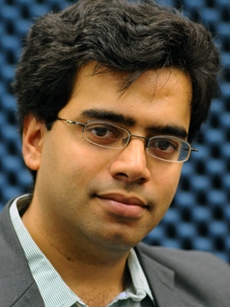Chinese technology company Xiaomi has announced its next salvo in the fast charging wars, a new 80W wireless method that the company claims beats out any other competitor. The 80W solution is said to be able to charge a 4,000mAh battery up to 50 percent full in eight minutes and 100 percent full in 19 minutes. The video above shows it in action on a modified Mi 10 Pro.Xiaomi already has the fastest wireless charging on a shipping phone; the Mi 10 Ultra has 50W wireless technology that can fully charge its 4,500mAh battery in 40 minutes. Oppo recently announced a 65W solution that is said to be able to charge a 4,000mAh battery in 30 minutes, but the tech is yet to ship in a commercial device.Fast wireless charging is much less common outside China, where companies like Huawei and Xiaomi have been working to outdo each other for a while. The fastest option that’s widely available in the West is the OnePlus 8 Pro, which has an optional 30W wireless charger. Apple’s new MagSafe chargers for the iPhone 12 line charge at up to 15W.Xiaomi hasn’t announced when a phone with 80W wireless charging will actually ship, but it shouldn’t be too far off. The company has consistently released phones with ever-higher wireless power specs over the past couple of years, with the Mi 10 Ultra only coming out a couple of months ago. Source: ht...
Xiaomi 80W wireless charging technology goes official
Read More........ Categories: News,Science-Technology,Wireless,World
Indian origin engineer develops technology for simultaneous Wifi transmission and reception

Harish Krishnaswamy, associate professor of electrical engineering, Columbia University
A team of Columbia University researchers believes that enabling reliable and efficient full duplex wireless communication is a task best addressed at the chip level. The researchers, led by Harish Krishnaswamy, an associate professor of electrical engineering, have developed full-duplex radio integrated circuits that can be implemented in nanoscale CMOS to enable simultaneous transmission and reception on the same frequency. "Having a transmitter and receiver use the same frequency offers the potential to immediately double network data capacity," Krishnaswamy says. "Our work is the first to demonstrate an IC that can receive and transmit simultaneously," he says. CMOS is the dominant technology used for radio ICs inside phones and other radio-equipped mobile devices. The biggest challenge the team faced during its research was canceling transmitter echo, a phenomenon that makes usable full duplex impossible. "What you really need to do is to cancel-out that echo to the point where it's eliminated almost perfectly and the residual echo is extremely small - smaller than the received signal, the desired signal - that you're trying to receive from the distant cell tower," he says. Since the echo is over a billion times more powerful than...
Subscribe to:
Posts (Atom)
